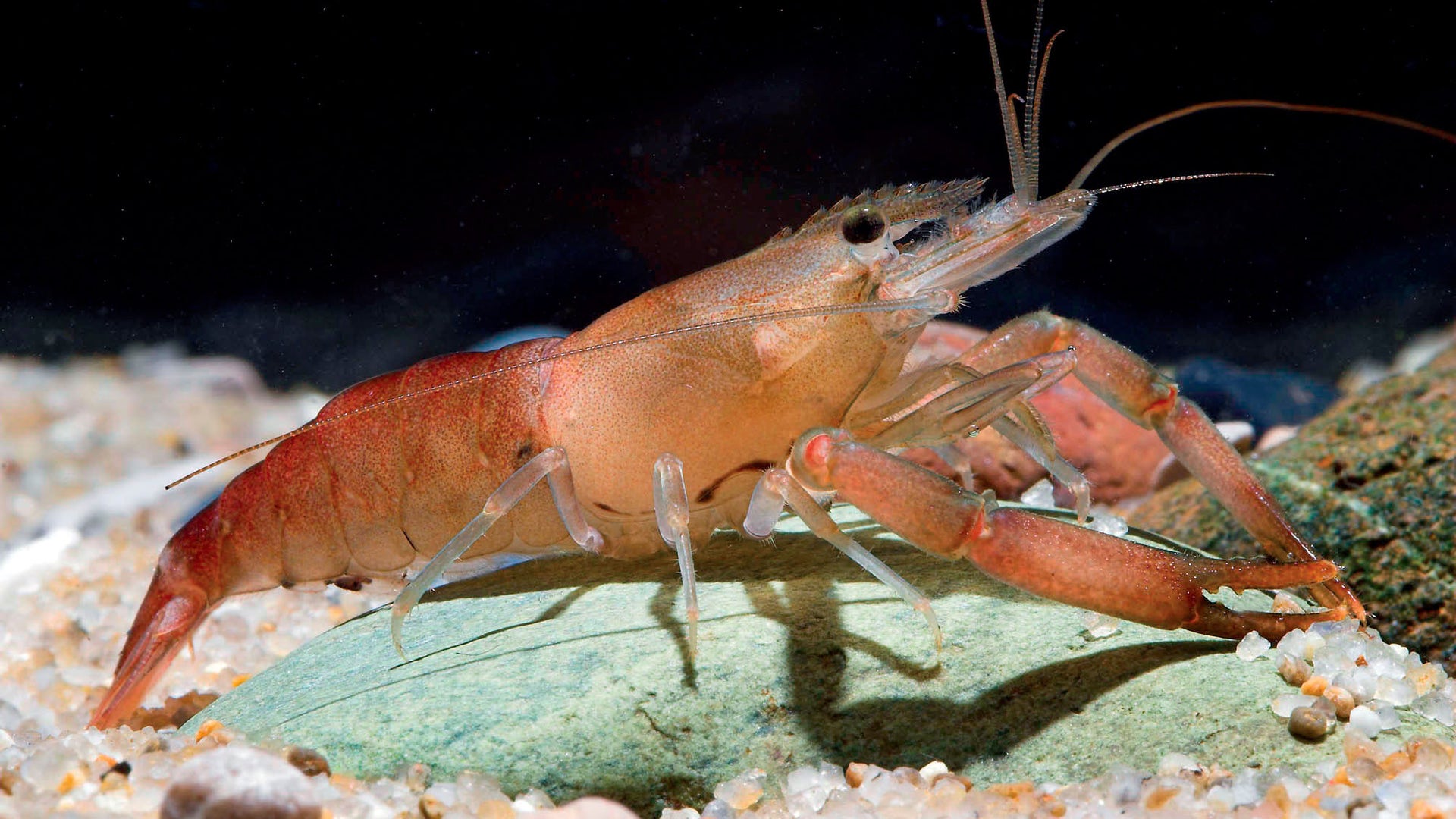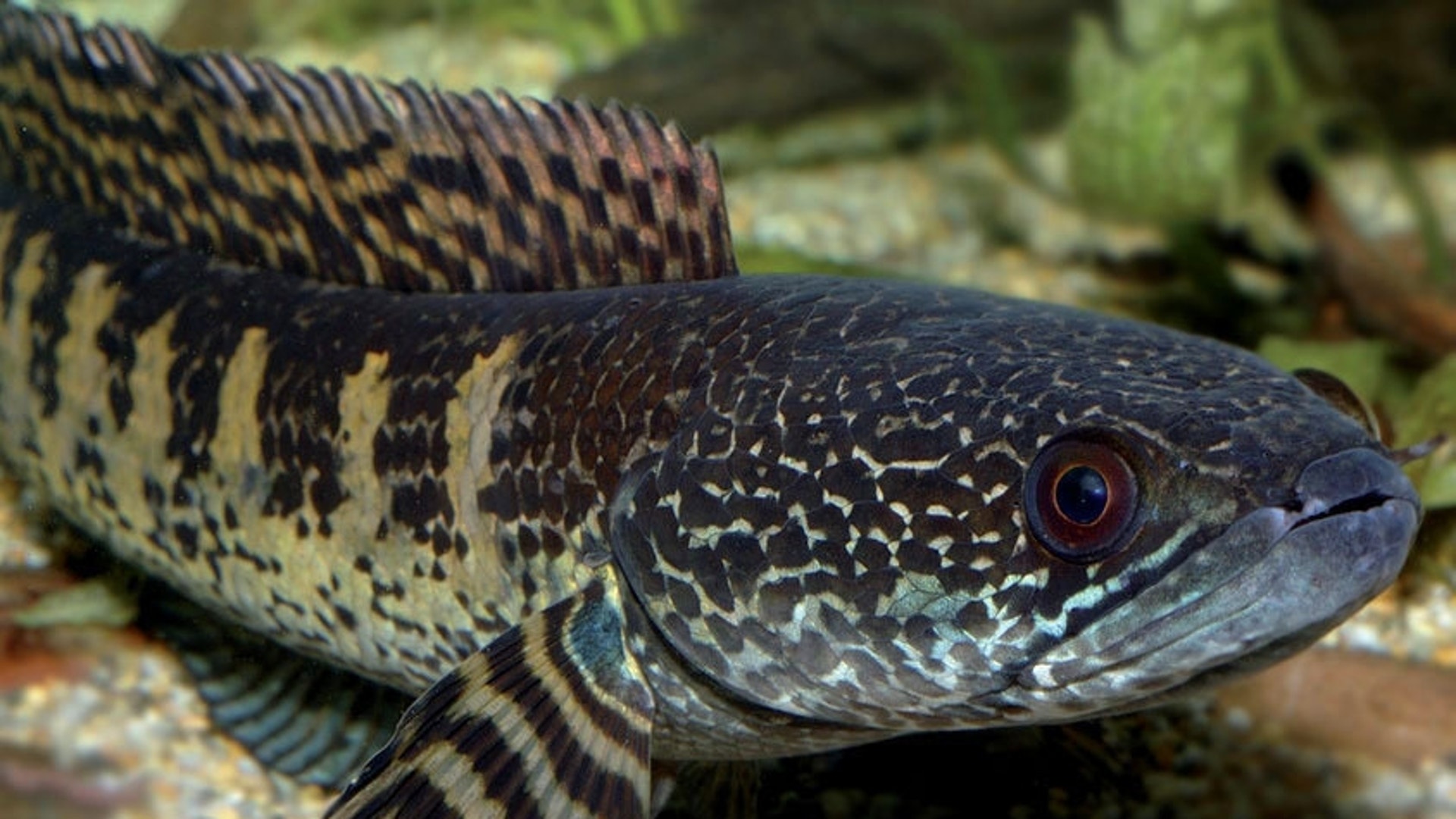Move Back
ADVERTISEMENT
Skip- Published27 Images
353 New Species Discovered in the Himalayas
The world's smallest deer, a flying frog and catfish that stick to rocks — as well as more than 350 other species — have been discovered over the past decade in the Himalayas, making it one of the world's most biologically rich regions, according to the World Wildlife Fund.
![Litter Frog]() Smith's litter frog , identified in 1999, one of five new frog discoveries in the Indian state of Assam, ranks among the most extraordinary-looking frogs in the world. Measuring only a few centimeters, this small frog has a giant pair of piercing, bulging and vivid golden eyes. Smith's litter frog was reportedly discovered in the Mayeng Hill Reserve Forest and Garbhanga Reserve Forest, Kamru District, Assam. (WWF)read more
Smith's litter frog , identified in 1999, one of five new frog discoveries in the Indian state of Assam, ranks among the most extraordinary-looking frogs in the world. Measuring only a few centimeters, this small frog has a giant pair of piercing, bulging and vivid golden eyes. Smith's litter frog was reportedly discovered in the Mayeng Hill Reserve Forest and Garbhanga Reserve Forest, Kamru District, Assam. (WWF)read more![Gumprecht's Green Pitviper]() Officially discovered in 2002, Gumprecht’s green pitviper is venomous and capable of growing to over four feet in length. Scientists predict that larger specimens exist. The species is known to occur around Putao, at altitudes above 400m in the far north of Myanmar. There are some striking differences between the males and females of this species; females reach a greater size, with a thin, white or whitish-blue streak on the head, and deep yellow eyes; males are shorter, have a red stripe on the head, and bright red or deep red eyes. (WWF)read moreGernot Vogel/WWF NepalShare
Officially discovered in 2002, Gumprecht’s green pitviper is venomous and capable of growing to over four feet in length. Scientists predict that larger specimens exist. The species is known to occur around Putao, at altitudes above 400m in the far north of Myanmar. There are some striking differences between the males and females of this species; females reach a greater size, with a thin, white or whitish-blue streak on the head, and deep yellow eyes; males are shorter, have a red stripe on the head, and bright red or deep red eyes. (WWF)read moreGernot Vogel/WWF NepalShare![Naung Mung Scimitar Babbler]() This medium-sized jungle bird reminiscent of a wren is dark brown, with a short tail, long legs, relatively large feet and a long curved bill. This long bill is used to forage and probe for food on the ground. The species was officially described as a new species in 2005. (WWF)read moreChristopher Milensky/WWF NepalShare
This medium-sized jungle bird reminiscent of a wren is dark brown, with a short tail, long legs, relatively large feet and a long curved bill. This long bill is used to forage and probe for food on the ground. The species was officially described as a new species in 2005. (WWF)read moreChristopher Milensky/WWF NepalShare![Liparis Dongchenii]()
![Impatiens Namchabarwensis]() Named after the canyon in which it was found, an area of Tibet which started to be explored as recently as the mid-1990s, the rare plant can grow two feet tall and flowers all year round. The color of the flower seems to change with temperature and exposure. They sometimes appear truly blue when in a cool climate and change to purple when temperatures rise; a characteristic unique for this species among impatiens. (WWF)read moreElayne Takemoto/WWF NepalShare
Named after the canyon in which it was found, an area of Tibet which started to be explored as recently as the mid-1990s, the rare plant can grow two feet tall and flowers all year round. The color of the flower seems to change with temperature and exposure. They sometimes appear truly blue when in a cool climate and change to purple when temperatures rise; a characteristic unique for this species among impatiens. (WWF)read moreElayne Takemoto/WWF NepalShare![Flying Frog]()
![Meconopsis Tibetica]() Meconopsis tibetica, described in 2006, is one of 12 new poppy species discoveries. A vast garden stretches across the Eastern Himalayas, a mysterious and alluring landscape that has yielded on average of 24 new plant discoveries every year for the last 10 years. (WWF)read moreMargaret Thorne/WWF NepalShare
Meconopsis tibetica, described in 2006, is one of 12 new poppy species discoveries. A vast garden stretches across the Eastern Himalayas, a mysterious and alluring landscape that has yielded on average of 24 new plant discoveries every year for the last 10 years. (WWF)read moreMargaret Thorne/WWF NepalShare![Zaw's Wolf Snake]() Zaw’s wolf snake, discovered dwelling in forests and near streams at elevations of less than 1500 feet in Assam, India, including in the Garbhange Reserve Forest and in northern Myanmar. The black snake, with white bands, can grow to half a meter in length, and feeds mainly on geckos. (WWF)read morePawar Samraat/WWF NepalShare
Zaw’s wolf snake, discovered dwelling in forests and near streams at elevations of less than 1500 feet in Assam, India, including in the Garbhange Reserve Forest and in northern Myanmar. The black snake, with white bands, can grow to half a meter in length, and feeds mainly on geckos. (WWF)read morePawar Samraat/WWF NepalShare![Heterometrus Nepalensis]() Among the new fi nds are three species of scorpion, one of which was described from the Chitwan National Park in Nepal in 2004. This discovery was particularly significant as it was the first species of scorpion ever to be discovered in the country. The 8cm long, reddish-black species has a smooth carapace, and a reddish-brown tail tip or telson that contains the venom. (WWF)read moreFrantisek Kovarik/WWF NepalShare
Among the new fi nds are three species of scorpion, one of which was described from the Chitwan National Park in Nepal in 2004. This discovery was particularly significant as it was the first species of scorpion ever to be discovered in the country. The 8cm long, reddish-black species has a smooth carapace, and a reddish-brown tail tip or telson that contains the venom. (WWF)read moreFrantisek Kovarik/WWF NepalShare![Calanthe Yuksomnensis]()
![Arunachal Macaques]() Described as a new species in 2005, the relatively large brown primate with a short tail was a significant discovery as, at the time, it represented the first new monkey species identified anywhere in the world in over a century. The newly described macaque species is stocky in build and has a darker face than other closely related species. It is the highest-dwelling macaque in the world, occurring between 1,600m and 3,500m about sea level. (WWF Nepal)read moreAnindya Sinha/WWF NepalShare
Described as a new species in 2005, the relatively large brown primate with a short tail was a significant discovery as, at the time, it represented the first new monkey species identified anywhere in the world in over a century. The newly described macaque species is stocky in build and has a darker face than other closely related species. It is the highest-dwelling macaque in the world, occurring between 1,600m and 3,500m about sea level. (WWF Nepal)read moreAnindya Sinha/WWF NepalShare![Asian_Babbler_Bird]()
![Oldest_Fern_Remains]()
![Termite_Fossil]()
![Leaf_Deer]()
![Oldest_Known_Mushroom_Fossil]()
![Macrobrachium_Agwi_Shrimp]() Macrobrachium agwi -- a new species of shrimp. A recent shipment of freshwater prawns imported into Europe from Cooch Behar, Bengal, had among their number a surprise stowaway; a previously unknown species to science. With its tinted reddish-brown color, the medium sized new species Macrobrachium agwi was described in 2008.read moreWerner Klotz / WWF NepalShare
Macrobrachium agwi -- a new species of shrimp. A recent shipment of freshwater prawns imported into Europe from Cooch Behar, Bengal, had among their number a surprise stowaway; a previously unknown species to science. With its tinted reddish-brown color, the medium sized new species Macrobrachium agwi was described in 2008.read moreWerner Klotz / WWF NepalShare![Saramati_Palm]() The species is the most recent addition to the Trachycarpus genus, and the most interesting yet according to some scientists. The palm was discovered in Assam, on the border with Myanmar. Growing to a height of 50 feet, the tree has a hairless trunk, one foot in diameter. (Keshow Chandra Pradhan/WWF Nepal)read more� Keshow Chandra Pradhan/ Michael Lorek / WWF NepalShare
The species is the most recent addition to the Trachycarpus genus, and the most interesting yet according to some scientists. The palm was discovered in Assam, on the border with Myanmar. Growing to a height of 50 feet, the tree has a hairless trunk, one foot in diameter. (Keshow Chandra Pradhan/WWF Nepal)read more� Keshow Chandra Pradhan/ Michael Lorek / WWF NepalShare![Assamese_Cascade_Frog]()
![Eastern_Himalayas]()
![Coelogyne_Pantlingii_Orchid]()
![Erethistoides_Ascita_Fish]()
![Erethistoides_Cavatura_Fish]()
![Itagonia_Cordiformis_Beetle]()
![Orange_Spotted_Snakehead_Fish]() The orange-spotted snakehead, endemic to the forest streams, ponds, and swamps adjacent to the Brahmaputra river in the subtropical rainforest of northern Assam. The species is remarkably striking, with a vibrant pattern of purple and orange adorning the length of its body. Discovered in 2000, and measuring up to 40cm in length, the fish is also known as the 'orange-spotted snakehead,' as its head looks like that of a snake. It is carnivorous and predatory, enjoying a diet of smaller fish and invertebrates.read more
The orange-spotted snakehead, endemic to the forest streams, ponds, and swamps adjacent to the Brahmaputra river in the subtropical rainforest of northern Assam. The species is remarkably striking, with a vibrant pattern of purple and orange adorning the length of its body. Discovered in 2000, and measuring up to 40cm in length, the fish is also known as the 'orange-spotted snakehead,' as its head looks like that of a snake. It is carnivorous and predatory, enjoying a diet of smaller fish and invertebrates.read more![Impatiens_Namchabarwensis_Flower]() Named after the canyon in which it was found, an area of Tibet which started to be explored as recently as the mid-1990s, the rare plant can grow two feet tall and flowers all year round. The color of the flower seems to change with temperature and exposure. They sometimes appear truly blue when in a cool climate and change to purple when temperatures rise; a characteristic unique for this species among impatiens.read more� Elayne Takemoto / WWF NepalShare
Named after the canyon in which it was found, an area of Tibet which started to be explored as recently as the mid-1990s, the rare plant can grow two feet tall and flowers all year round. The color of the flower seems to change with temperature and exposure. They sometimes appear truly blue when in a cool climate and change to purple when temperatures rise; a characteristic unique for this species among impatiens.read more� Elayne Takemoto / WWF NepalShare![Cretacegekko_Burmae_Gecko]()
- Published27 Images
353 New Species Discovered in the Himalayas
The world's smallest deer, a flying frog and catfish that stick to rocks — as well as more than 350 other species — have been discovered over the past decade in the Himalayas, making it one of the world's most biologically rich regions, according to the World Wildlife Fund.
Move Forward
- 353 New Species Discovered in the Himalayas



























Thumbnail View
Image 0 of 27


























